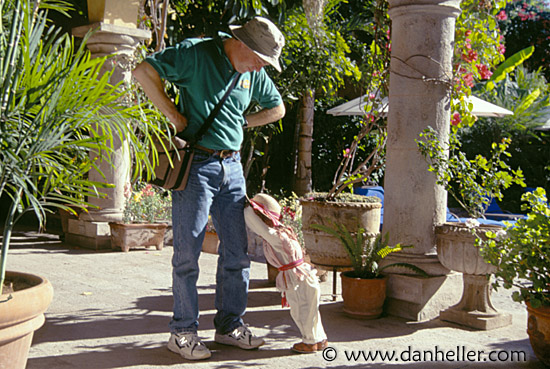Thursday, June 07, 2007
Wednesday, June 06, 2007
Dissociative Identity Disorder
 this picture is a perfect representation of dissociative identity disorder because it reflects the multiple different people that exist in only one body.
this picture is a perfect representation of dissociative identity disorder because it reflects the multiple different people that exist in only one body.Dissociative Identity Disorder: a rare dissociative disorder in which a person exhibits two or more distinct and alternating personalities; also called multiple personality disorder.
Repression
 This picture represents repression because it shows physically what possibly happens inside the brain when a repressed memory is recovered. It's like a new room is being opened in your mind that can be opened and examined after it is found.
This picture represents repression because it shows physically what possibly happens inside the brain when a repressed memory is recovered. It's like a new room is being opened in your mind that can be opened and examined after it is found.Repression: in psychoanalytic theory, the basic defense mechanism that banishes anxiety-arousing thoughts, feelings, and memories from consciousness.
Feel-good, do-good phenomenon
 the feel-good, do-good phenomenon is interesting to me because i wouldn't have guessed that someone's emotional state can have such an effect on their actions. this is a picture of a woman being helped out of a boat and you can probably safely assume that the man helping her out is in at least a decently good mood.
the feel-good, do-good phenomenon is interesting to me because i wouldn't have guessed that someone's emotional state can have such an effect on their actions. this is a picture of a woman being helped out of a boat and you can probably safely assume that the man helping her out is in at least a decently good mood.Feel-good, do-good phenemenon: people's tendency to be helpful when already in a good mood.
Sexual Orientation
 Sexual orientation is a big deal in the country for some reason that is unknown to me. I tend not to shy away from conflict, so I chose sexual orientation as my vocab word for chapter 12. Obviously this is a picture of a gay couple.
Sexual orientation is a big deal in the country for some reason that is unknown to me. I tend not to shy away from conflict, so I chose sexual orientation as my vocab word for chapter 12. Obviously this is a picture of a gay couple.Sexual Orientation: an enduring sexual attraction toward members of either one's own gender (homosexual orientation) or the other gender (heterosexual orientation).
Down Syndrome
 So it is fairly obvious why i chose this image for down syndrome. I chose down syndrome as my vocab word for chapter 11 because i feel strongly about special education children and i would like to pursue that somehow as a career later in life.
So it is fairly obvious why i chose this image for down syndrome. I chose down syndrome as my vocab word for chapter 11 because i feel strongly about special education children and i would like to pursue that somehow as a career later in life.Down Syndrome: a condition of retardation and associated physical disorders caused by an extra chromosome in one's genetic makeup.
Babbling Stage
 At the babbling stage, babies simply utter sounds that are completely unrelated to any form of language spoken around them. this picture shows one baby babbling to another, and that's why i chose it...and because the babies are cute.
At the babbling stage, babies simply utter sounds that are completely unrelated to any form of language spoken around them. this picture shows one baby babbling to another, and that's why i chose it...and because the babies are cute.Babbling Stage: beginning at 3 to 4 months, the stage of speech development in which the infant spontaneously utters various sounds at first unrelated to the household language.
Iconic Memory
 Iconic memory is a momentary photograph-like picture that remains in your mind of a stimulus. I used the picture of a man sitting backwards in a chair because that's something you could see that would remain in your iconic memory for a couple of seconds and you would be able to recall it.
Iconic memory is a momentary photograph-like picture that remains in your mind of a stimulus. I used the picture of a man sitting backwards in a chair because that's something you could see that would remain in your iconic memory for a couple of seconds and you would be able to recall it.Iconic Memory: a momentary sensory memory of visual stimuli; a photographic or picture-image memory lasting no more than a few tenths of a second.
Classical Conditioning
 Probably the most associated thing with classical conditioning would have to be Pavlov's dog. It's the epitome of classical conditioning.
Probably the most associated thing with classical conditioning would have to be Pavlov's dog. It's the epitome of classical conditioning.Classical Conditioning: a type of learning in which an organism comes to associate stimuli; a neutral stimulus that signals an unconditional stimulus begins to produce a response that anticipates and prepares for the unconditioned stimulus, also called Pavolvian conditioning.
Dream

I think dreams are one of the most fascinating things we have talked about this year in AP Psych. I can't believe that we don't fully understand why we dream and the significances of those dreams, and yet we're venturing farther away than ever into outer space.
Dreams: periodic, natural, reversible loss of consciousness - as distinct from unconsciousness resulting from a coma, general anesthesia, or hibernation.
Dreams: periodic, natural, reversible loss of consciousness - as distinct from unconsciousness resulting from a coma, general anesthesia, or hibernation.
Extrasensory Perception
 I personally have never believed in ESP, however apparently it is at least a slightly viable thing if it is recognized in our Psychology book. It seems a little out there, but i guess it's not quite as out there as i first thought it was.
I personally have never believed in ESP, however apparently it is at least a slightly viable thing if it is recognized in our Psychology book. It seems a little out there, but i guess it's not quite as out there as i first thought it was.Extrasensory Perception: the controversial claim that perception can occur apart from sensory input; said to include telepathy, clarivoyance, and precognition.
Blind Spot

This is a blind spot test, so to speak. It's difficult to reproduce here because the two objects should be a certain distance apart, but I think it's really interesting how our eyes, which are so easily able to see minute differences, have a spot where they can see nothing.
Blind Spot: the point at which the optic nerve leaves the eye, creating a "blind spot" because no receptor cells are located there.




